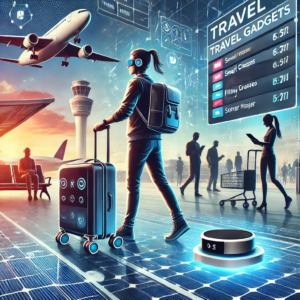How Can You Safely Connect to Public WiFi?
We all know I once believed that public WiFi, which is now easily accessible in most parks, cafes, shopping malls, and even in parking lots, is free to use. However, soon after, my smartphone got infected by malware, I couldn’t think of any reason, but the public WiFi I always leisurely stayed connected to.
Anyway, I did some research and found that, technically, public WiFi is free since we don’t pay anything to use it. But sometimes, they may not still be free as we pay a hefty price to use them with our data.
Public WiFi is one of the major reasons why our sensitive data falls into wrong the hands of bad actors. However, one also simply cannotouldn’t ignore the comfort of public WiFi. So, below, I’ve listed down some important factors to securely use public WiFi.
But before I start, here’s a little piece of advice. If your internet service provider (ISP) offers WiFi hotspots, always connect to them.
As for meAs a Spectrum internet user, I always connect to its dedicated WiFi hotspots offered by Spectrum. They’re fast, reliable, and importantly, I can always rely on Spectrum customer service to quickly respond to my queries, if any.
Important Factors to Consider When Using Public WiFi:
- Always Connect to a VPN:
Virtual private network (VPN) may come in handy when you’re connected to public WiFi. When you connect to a VPN, it creates an encrypted tunnel between your device and the VPN. The data you send or receive first goes through this encrypted tunnel and then heads to its destination.
Using this encrypted tunnel, Additionally, a the VPN also alters your device’s original IP address and assigns it a fake one. By doing so, bad actors may not be able to pinpoint your device to install malware.
- Keep Make Sure the Connection is Secured with a Password:
Generally, most public WiFi is unprotected, and you may easily connect your devices to them without a password. However, some public WiFi may require you to add the password first.
They Such public WiFi may be more secure than open networks and is often found in cafes or restaurants. Besides a password, such protected connections may also ask you to create an account or register first before using the WiFi.
- Always Verify the Network:
If you’re a frequent public WiFi user, it’s vital to verify first that you’re connecting to the right network. While you may not be able to tell if a network is legitmalicious or not, some telltale signs may help.
For example, consider you’ve just entered a restaurant, and the welcome board says, “Free WiFi.” While you wait for your order, you turn on the WiFi on your smartphone to surf social media. However, you notice that two connections; “Free WiFi” and “Free WiFi!” are available.
Note that the second WiFi has an exclamation sign, and most users may not notice such small differences. Here, the point is that bad actors may use similar tactics to trick people into connecting to their malicious network.
So, do not act hastily and connect to a network without verifying it first. And, in case of any confusion, do not hesitate to ask around to find reliable public WiFi.
- Avoid Do Not Accessing Sensitive Information:
I believe browsing the internet for study, directions, music, playing games, or other tasks that may not contain sensitive information are doable on public WiFi. However, I won’t recommend you open a banking app or make transactions on public WiFi.
Also, do not log in to social media accounts or type passwords over public WiFi. It’s because you may not know if bad actors have already gained access to a public WiFi you’re connected to.
However, if sometimes you need to access sensitive information on an app, make sure to enable 2-factor authentication (2FA). Besides the password, the 2FA may enhance your data’s security and prevent it from falling into hacker’s hands.
- Visit Secured Websites Only:
When you’re surfing the web on public WiFi, only visit the websites that take strong security measures to protect your data. One sign of secure websites is that they start with “HTTPS,” where the “s” indicates that the website has an SSL (Secure Socket Layers) certificate or encryption in place. Another indication that a website may be safe to browse is a padlock symbol before the URL.
NAlso, note that websites that start with “HTTP” do not have a security certificate or strong encryption. And, your browsing data may not be secure on such websites.
Frequently Asked Questions (FAQs):
Are all public WiFis unsafe to useecure?
No, not all public WiFi are unsafe to useis unsecure, as some may be protected by a password or have strong encryptions to secure the network.
Should we click ‘forget the network’ after done using a public WiFiit?
Yes, it’s a safe practice to ‘forget the network’ after using it as your device won’t automatically connect to it next time.
Is public WiFi protected by a password necessarily secure?
No, even a public WiFi protected by a password may be breached by hackers. However, a password-protected public WiFi may generally be more secure than an open public WiFi.






Post Comment